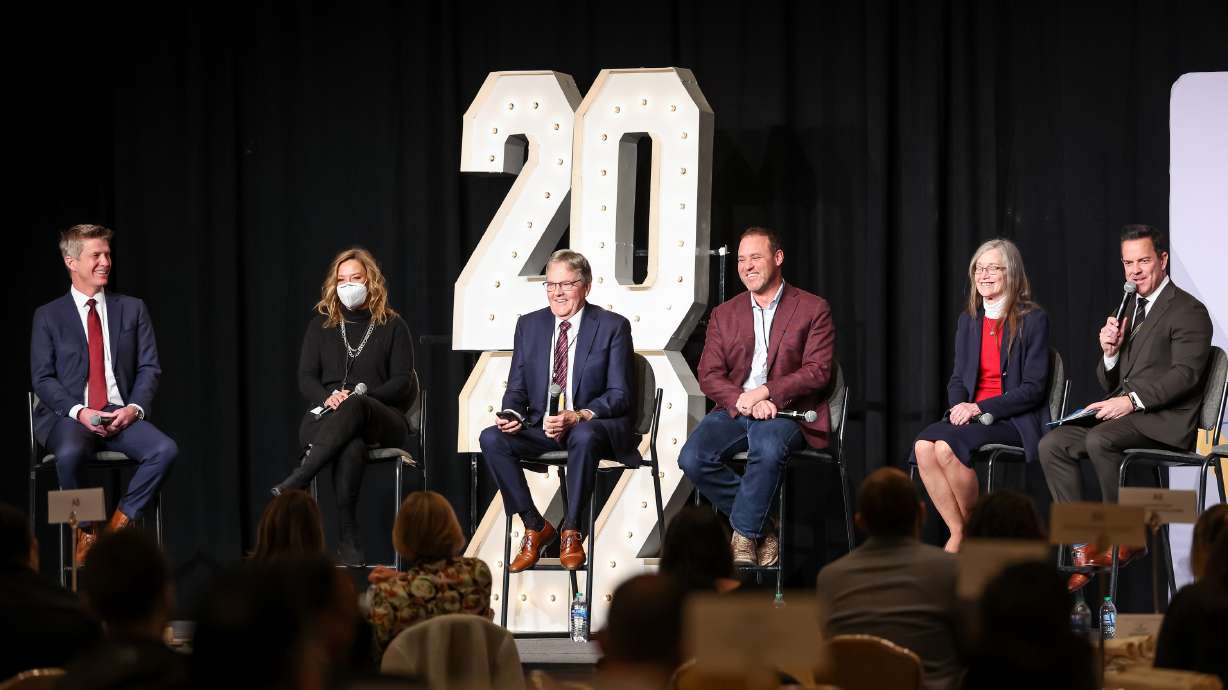Estimated read time: 3-4 minutes
This archived news story is available only for your personal, non-commercial use. Information in the story may be outdated or superseded by additional information. Reading or replaying the story in its archived form does not constitute a republication of the story.
SALT LAKE CITY — Members of the Utah Senate and other lawmakers discussed the state of public and higher education on Thursday during the Utah Economic Outlook and Public Policy Summit.
"Every time I send out a survey asking my constituents what's most important to make investments, it always comes back to education," Senate Majority Whip Ann Millner, R-Ogden, said.
Milner emphasized the importance of the education funding framework put in place from last year's passing of SB1, which included a base budget of more than $400 million in new education funding, a 6% increase to the value of the weighted pupil unit, as well as funding for enrollment growth and inflation.
The investment accounting for enrollment growth turned out to be a wise one, as enrollment in Utah's public education system is forecast to increase by 3,680 students in 2023, carrying an ongoing cost of over $23 million, according to the 2022 Economic Report to the Governor.
In higher education, even when accounting for COVID-19, enrollment is expected to outpace the rest of the country, with an anticipated 56,000 additional students enrolling in higher education institutions over the next 10 years, according to the report.
SB1, Milner said, allowed for the state to allocate money into a "rainy day fund" for education that would provide resiliency in the face of economic downturns and allow Utah to continue to fund education, even during challenging times.
"There's a real commitment to education. Due to that funding framework that we have, we can continue this going forward which is even more important," she said.
Sustaining the framework
One topic raised during the summit is how the upcoming legislative session could impact teacher retention in Utah.
"When we're able to increase (weighted pupil units), we're able to increase teacher salaries. We've made significant progress on that in the last few years," Milner said.
Milner also noted that when teachers leave the profession in the state of Utah, it happens early.
"If you look at our overall retention, we're pretty average with other states and other places, but we lose them in their first five years," Milner said.
To improve this, Milner said Utah needs to provide more support to teachers and be as flexible as possible.
"In this state, our families care about being able to have mom at home. We have to think through 'how do we get even more flexible,'" she said. "We want kids in school, we need people in there, but can we think out of the box, just like businesses are doing right now to help meet their workforce needs."
Milner also spoke in support of HB113, which amends a formula related to add-on weighted pupil units for students with disabilities.
The bill states that funding will reflect the direct cost of programs for students with disabilities, allowing for funds to be used by certified instructional personnel who have students with disabilities in their classes.
"Part of what happens is the strain on teachers — and it can be that some students just need more help than other students. If we've got some student-need-based funding in that allow us to get some paraprofessionals in and other supports to support not only our kids but also our teachers as they work with their kids, I think that helps to lessen the impact on them," Milner said.
"If we want to continue to be the No. 1 state for upward mobility, we have to invest in education," Utah. Gov. Spencer Cox said.
A full list of education-related bills expected to be introduced at the upcoming legislative session can be found here.










